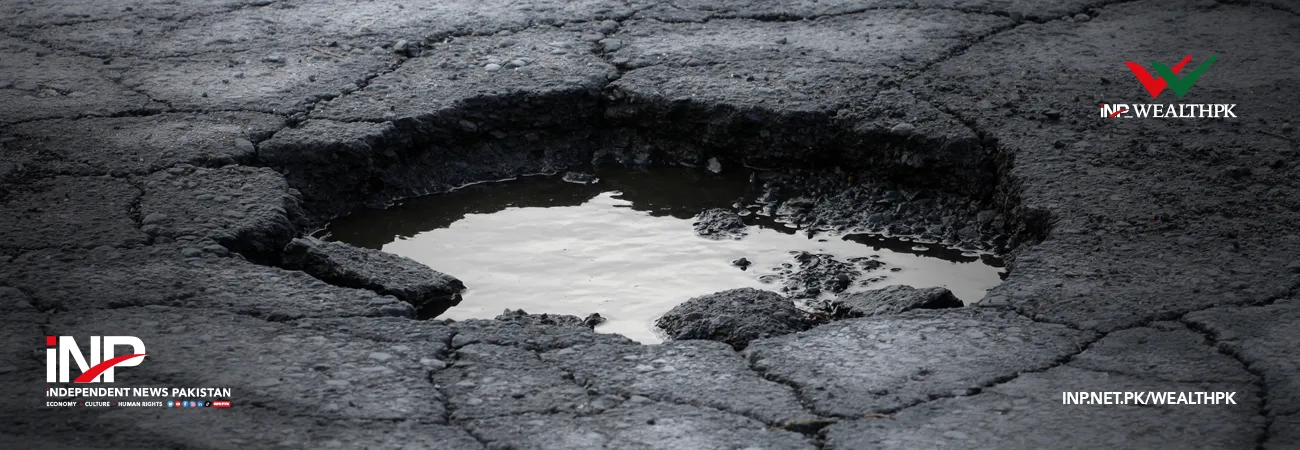INP-WealthPk
By Ayesha Saba
ISLAMABAD, April 04 (INP-WealthPK): Pakistan should speedily implement the National Electricity Policy 2021, which stresses off-grid and micro-grid solutions in order to promote electricity access to areas where grid expansion is financially unviable.
 Further, the policy has stressed integrated planning for rural electrification and the provision of electricity to unserved areas of the country.
Rural electrification is essential for rapid economic development. Without electricity, it is impossible to improve the quality of rural life and to carry out productive activities in agriculture, manufacturing and trade.
Pakistan, according to World Bank statistics, is one of the countries with a large population without access to electricity. Only 74% of the population has access to electricity in Pakistan.
The bulk of the rural population in developing nations like Pakistan is not linked to the electrical grid. Furthermore, power outages in rural regions can last up to 18 hours each day, especially during the summer months. These power outages have wreaked havoc on Pakistan's economy and stifled GDP growth, impacting employment, competitiveness, exports and poverty alleviation.
According to the state of industry report by the National Electric Power Regulatory Authority, the power sector regulator in Pakistan, there are 816 villages in the Islamabad Electric Supply Company jurisdiction, out of which only 260 are electrified. On the other hand, a total of 277 villages out of 483 are electrified in the Tribal Areas Electric Supply Company region. In Quetta Electric Supply Company, 26,231 out of 29,692 villages are electrified. Lahore Electric Supply Company region has over 86% electrification rate and Peshawar Electric Supply Company over 80%.
Talking about the importance of rural electrification, former member energy, Planning Commission, and eminent energy expert Syed Akhtar Ali said, “Energy is an essential requirement of existence for both rural and urban populations. In Pakistan, two-thirds of the population has access to electricity, with rural regions accounting for 80% of those without electricity.”
“The national grid cannot reach villages outside of urban areas, where localised fossil-based alternatives are nearly impossible and prohibitively expensive. The costly diesel-powered energy is also out of reach for the poor rural populations,” continued Akhtar Ali.
The energy expert says rural electrification, which should have been a foundation of every government's strategy, is never given the attention it deserves despite the fact that it will have contributed significantly to overall poverty reduction. “The focus remains on expanding the national grid and electrifying communities in close proximity to large cities.”
He advocated reverting to renewable energy technology like solar, wind, hydro and biomass, which have evolved tremendously over the years. “It should not be difficult for a country like Pakistan, where there are abundant solar energy sources, to electrify all of the un-electrified households in a decade.”
According to the energy expert, Pakistan’s aim to have a 60% market share of renewable energy sources by 2030 with solar and wind accounting for half of it, will be a positive improvement in the country's entire energy landscape, assisting in addressing the environmental and climate challenges as well as reducing energy imports.
According to Indicative Generation Capacity Expansion Plan 2021-30, the government through the Alternative and Renewable Energy Policy 2019 aims to add at least 20% and 30% renewable energy mix to the national grid by 2025 and 2030. As of May 2021, 400MW utility-scale solar and 1,086MW wind power on-grid projects had been commissioned.
Further, the policy has stressed integrated planning for rural electrification and the provision of electricity to unserved areas of the country.
Rural electrification is essential for rapid economic development. Without electricity, it is impossible to improve the quality of rural life and to carry out productive activities in agriculture, manufacturing and trade.
Pakistan, according to World Bank statistics, is one of the countries with a large population without access to electricity. Only 74% of the population has access to electricity in Pakistan.
The bulk of the rural population in developing nations like Pakistan is not linked to the electrical grid. Furthermore, power outages in rural regions can last up to 18 hours each day, especially during the summer months. These power outages have wreaked havoc on Pakistan's economy and stifled GDP growth, impacting employment, competitiveness, exports and poverty alleviation.
According to the state of industry report by the National Electric Power Regulatory Authority, the power sector regulator in Pakistan, there are 816 villages in the Islamabad Electric Supply Company jurisdiction, out of which only 260 are electrified. On the other hand, a total of 277 villages out of 483 are electrified in the Tribal Areas Electric Supply Company region. In Quetta Electric Supply Company, 26,231 out of 29,692 villages are electrified. Lahore Electric Supply Company region has over 86% electrification rate and Peshawar Electric Supply Company over 80%.
Talking about the importance of rural electrification, former member energy, Planning Commission, and eminent energy expert Syed Akhtar Ali said, “Energy is an essential requirement of existence for both rural and urban populations. In Pakistan, two-thirds of the population has access to electricity, with rural regions accounting for 80% of those without electricity.”
“The national grid cannot reach villages outside of urban areas, where localised fossil-based alternatives are nearly impossible and prohibitively expensive. The costly diesel-powered energy is also out of reach for the poor rural populations,” continued Akhtar Ali.
The energy expert says rural electrification, which should have been a foundation of every government's strategy, is never given the attention it deserves despite the fact that it will have contributed significantly to overall poverty reduction. “The focus remains on expanding the national grid and electrifying communities in close proximity to large cities.”
He advocated reverting to renewable energy technology like solar, wind, hydro and biomass, which have evolved tremendously over the years. “It should not be difficult for a country like Pakistan, where there are abundant solar energy sources, to electrify all of the un-electrified households in a decade.”
According to the energy expert, Pakistan’s aim to have a 60% market share of renewable energy sources by 2030 with solar and wind accounting for half of it, will be a positive improvement in the country's entire energy landscape, assisting in addressing the environmental and climate challenges as well as reducing energy imports.
According to Indicative Generation Capacity Expansion Plan 2021-30, the government through the Alternative and Renewable Energy Policy 2019 aims to add at least 20% and 30% renewable energy mix to the national grid by 2025 and 2030. As of May 2021, 400MW utility-scale solar and 1,086MW wind power on-grid projects had been commissioned.













